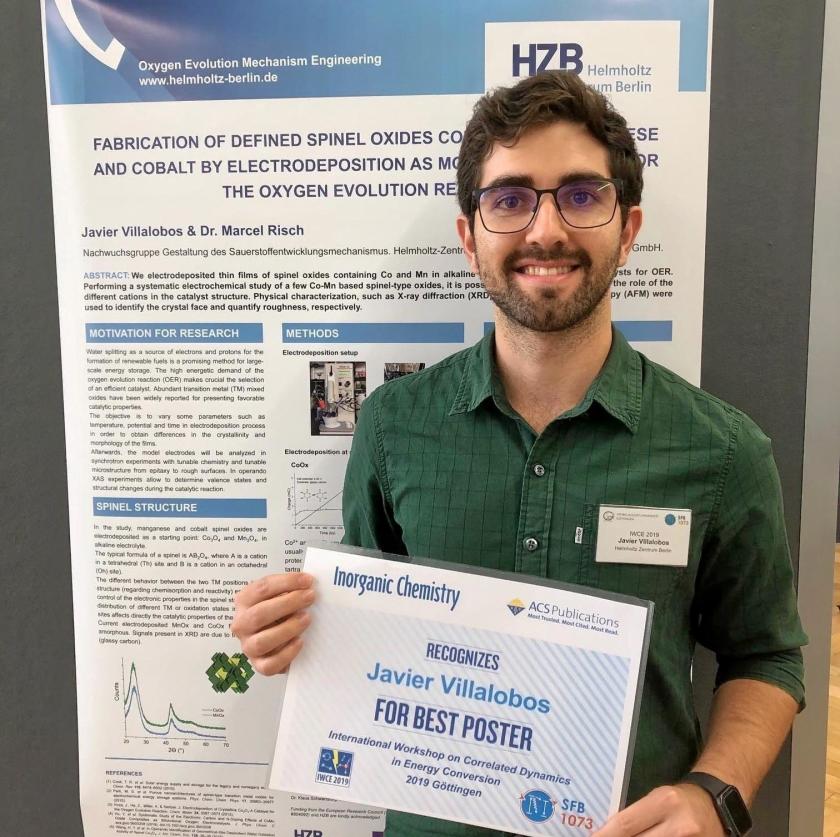Poster award for HZB doctoral student

Congratulation to Javier Villalobos from the Young Investigator Group
Oxygen Evolution Mechanism Engineering at HZB. © HZB
Javier Villalobos has been awarded for the best poster at the International Workshop on Correlated Dynamics in Energy Conversion (IWCE 19) in Göttingen. The doctoral student works in the young investigator group "Oxygen Evolution Mechanism Engineering". His research contributes to a better understanding of electrocatalytic oxygen evolution.
On his poster, Javier Villalobos presented first results on the electrochemical synthesis of spinel oxides, which can be used as catalysts for the oxygen evolution reaction. The title of his poster is "Fabrication of defined spinel oxides containing manganese and cobalt by electrodeposition as model electrodes for the oxygen evolution reaction".
The presented results are the first step towards developing a model system for systematic studies on such catalysts. It is crucial to deposit films with controlled composition and microstructure. These materials will soon be investigated using operando methods on BESSY II to better understand the known differences in activity.
"With his poster, Javier Villalobos laid the foundation for a better understanding of the oxygen evolution reaction in order to produce sustainable fuels based on water (e.g. hydrogen) more cheaply," explains Dr. Marcel Risch, supervisor of the project. Since March 2019, he has been setting up a young investigator group at HZB with a Starting Grant from the European Research Council (ERC).
(red)
https://www.helmholtz-berlin.de/pubbin/news_seite?nid=20767;sprache=en
- Copy link
-
The twisted nanotubes that tell a story
In collaboration with scientists in Germany, EPFL researchers have demonstrated that the spiral geometry of tiny, twisted magnetic tubes can be leveraged to transmit data based on quasiparticles called magnons, rather than electrons.
-
Ernst Eckhard Koch Prize and Innovation Award on Synchrotron Radiation 2025
At the 27th BESSY@HZB User Meeting, the Friends of HZB honoured the dissertation of Dr Enggar Pramanto Wibowo (Friedrich-Alexander University Erlangen-Nuremberg). The Innovation Award on Synchrotron Radiation 2025 went to Prof. Tim Salditt (Georg-August-University Göttingen) and Professors Danny D. Jonigk and Maximilian Ackermann (both, University Hospital of RWTH Aachen University).
-
Bright prospects for tin perovskite solar cells
Perovskite solar cells are widely regarded as the next generation photovoltaic technology. However, they are not yet stable enough in the long term for widespread commercial use. One reason for this is migrating ions, which cause degradation of the semiconducting material over time. A team from HZB and the University of Potsdam has now investigated the ion density in four different, widely used perovskite compounds and discovered significant differences. Tin perovskite semiconductors produced with an alternative solvent had a particular low ion density — only one tenth that of lead perovskite semiconductors. This suggests that tin-based perovskites could be used to make solar cells that are not only really environmentally friendly but also very stable.
